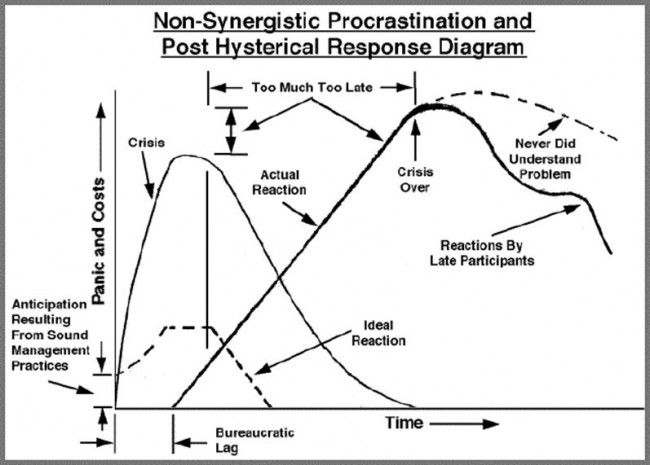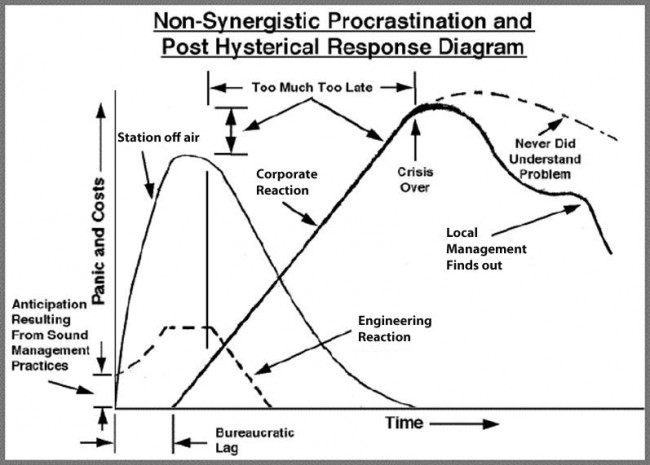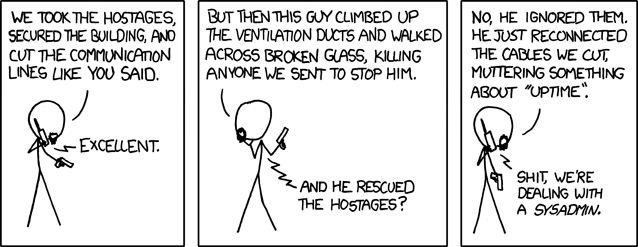I found this little item during my Sunday morning blog reading:

I found it rather amusing and made a few label modifications to make it radio appropriate:

H/T Cdr Salamander
There is some very cool stuff out there, you just have to look for it. Software defined radios are in that category. Many things come with a SDR, including a built in spectrum analyzer, continuously variable IF bandwidth and so on. Many manufactures have build SDR’s; ICOM, AOR, TENTEC, WInRadio, etc. Until recently, a SDR would set one back a pretty penny.
Then there is the Ultra Cheap Software Defined Radio based on a RTL2832 USB Television tuner. Someone figured out that the TV tuner covers from approximately 60 MHz to 1700 MHz and it’s raw output can be used by any number of free, open source software programs.
Interface and program and be found at: http://wiki.spench.net/wiki/USRP_Interfaces
List of compatible devices can be found here: http://www.reddit.com/r/RTLSDR/comments/s6ddo/rtlsdr_compatibility_list_v2_work_in_progress/
Google discussion group: Ultra Cheap SDR
Radio software information: HDSDR, GNUradio, WinRadio
I found a Newsky TV28T USB tuner on Amazon for about $30.00. I figured, what the heck, it is only thirty dollars. There are some sources that have the ezcap EzTV668 on dealextreme for less than $20.00, however, I could not find that particular model. In any case it looks like a fun project.

From XKCD
There is a lot of buzz about converged technologies and what not. I have always been a wee bit leery of bleeding edge technology, lots of money and time can be wasted there. Incompatibility between different manufactures equipment and protocols can cause major heartburn in all equipment life stages. See also: VHS vs Betamax. Thus, when many disparate standards are homogenized into one acceptable system for everyone, we all benefit and technology moves forward.

Audio over IP (AOIP) is moving into the general acceptance of broadcasters as a reliable system for studio construction. As with anything, there are pluses and minus to this development: First of all, packet switched data is more efficient and flexible than circuit switched data. For the purposes of clarity, an AES3 signal within a broadcast facility going from one piece of equipment to another can be defined as circuit switched data. Once the data is segmented, packetized and framed, it can be sent anywhere, over any LAN or WAN. This allows for greater connectivity between facilities and greatly increased delivery methods and redundancy.
The downsides are increased complexity in transmission, greater reliance software and delicate operating systems to process audio into data and deliver it, and Quality of Service (QoS) issues. Additionally, there are many different AOIP protocols and applications currently in use. To date, this is the current list AOIP standards that are used by various manufactures:
Each system has different characteristics. A Livewire system will not talk with a Wheatnet system and so forth. This is because of differences in the transport layer encoding schemes. Some use UDP, some use RTP, some use a propriety transport protocol, and some may even use TCP (remember the 7 layer OSI model). It would be similar to having an analog Wheatstone console unable to send audio to an analog Optimod which would be unable to modulate a BE transmitter.
AES X192 is an effort by the Audio Engineering Society to set an Audio over IP interoperability standard. This is the direction that studio audio equipment is moving and indeed, broadcasting in general.
The X192 project endeavors to identify the region of intersection between these technologies and to define an interoperability mode within that region. The initiative will focus on defining how existing protocols may be used to create an interoperable system. No new protocols will be developed to achieve this. Developing interoperability is therefore a relatively small investment with potentially huge return for users, audio equipment manufacturers and network equipment providers.
More here.
Eventually, broadcast audio consoles will plug into a WAN and be able to source audio from all over the place, not just the local physical studio structure. This lends itself to the evolving wired or wireless IP delivery method in place of the current terrestrial radio broadcasting currently used. As such, I will be diving into the fascinating world of AOIP more in future posts.